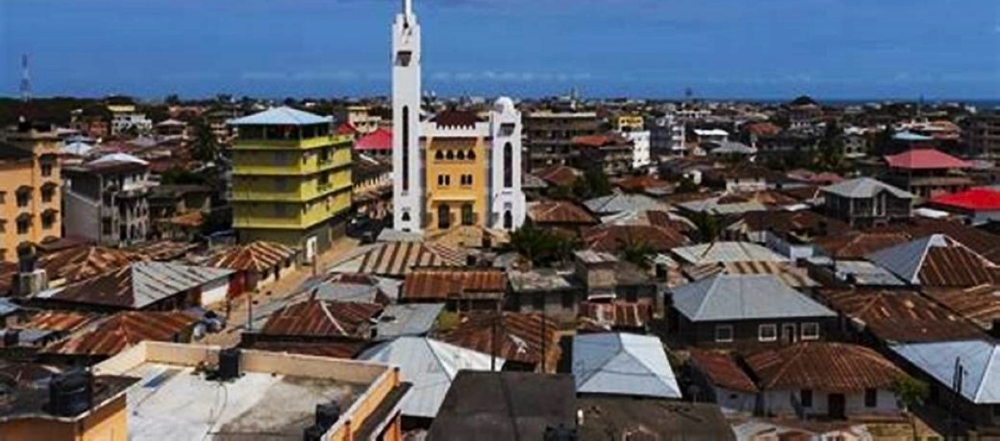Two prominent families of Asian origin have their roots in Tanga.
The Karimjee Jivanjee family settled in Tanga in 1830 while that of Khanbhai has a history in that coastal town that dates back to 1836.
After many years of neglect, what makes Tanga tick today is only its history.
Tanga is essentially the oldest town on the mainland Tanzania, formerly Tanganyika.
Tanga remains the most important Tanzania port after Dar-es-Salaam despite being almost dormant today.
But it boasts a city status and lies just south of the Kenyan border.
Like Bagamoyo, it has an air of fading decadence about it and would not feature in any travel guide were it not for the superb beaches which sprawl to the south of the town, and the vibrant nightlife that transforms the town after dark.
It was here that a German expeditionary force led by Colonel Von Lettow-Vorbeck defeated a joint British and Indian landing force in 1914, aided and abetted by millions of angry bees whose hives had been destroyed by gunfire.
The tragic though comical consequences of that battle shaped the opening chapter of William Boyd’s contemporary novel, “An Ice Cream War”.
More than a thousand years ago, some Persians migrated to Tanga.
The people from Persia are the ones who gave ‘Tanga’ its name.
In Persian language, Tanga seems to have four meanings:
Straight, Green Valley, The Road Beside a Mountain, Farm on Mountain or Rolling Hills.
In 1857 Richard Burton, the explorer, visited Tanga and described it as a “patch of thatched pent roofed huts, built upon a bank overlooking the sea!”
In Kiswahili “Tanga” means ship’s mast, which suits its coastal and harbor status.
Burton estimated the population to be 4,000 to 5,000, which included fifteen Baluchis and twenty Indian merchants.

The town was under the rule of The Sultan of Zanzibar.
At that time Tanga was a trading post dealing mainly in ivory.
The annual trade in ivory was about 70,000 pounds. Tanga was a small outlying settlement compared to its more prosperous neighbor, Pangani.
With the coming of the Germans to East Africa in the last quarter of 19th century, the port of Tanga probably offered less resistance to The Germans compared to, for example, Pangani, which was more heavily fortified.
The Germans took control of the coastal area from the Sultan of Zanzibar in April 1891 calling their colony Tanganyika.
In the same year, Tanga was designated a township.
From then on, large scale developments, pushed by private German commercial interests took place.
A wharf with a railway line to the interior was developed, construction of the Railway line started in 1896.
The line reached Korogwe in 1902; Mombo in 1904 magnificent Cliff block hospital was built in 1902.
The Usambara Mountains were opened up as reliable roads and bridges were built which are still in use today.
The Railway line was also planned to go to Lushoto and beyond.
A short line was built at Shume; parts of it still exist today.
The Tanga town Centre was also properly planned and developed. Most of the commercial cum residential buildings in use today are from that German period of 1891 to 1914.
Sisal, a plant that looks like yucca, was introduced into Tanganyika by the Germans in 1893.
It came from the Yucatan State of Mexico and even the Swahili term, ‘Katani’ meaning ‘sisal,’ was derived from ‘Yucatan!’
Sisal produces the longest and strongest natural plant fibers, hence the longest and strongest ropes, everything from the largest ropes to tie battle ships to docks to twine for boxes.
Sisal was so lucrative with no competitors that it was then called the “white gold of Tanganyika”.
Tanga became the largest producer and exporter of Sisal in the world.
In 1913, Tanga exported 20,800 tons of Sisal fibre from its port.
In 1914, during World War One, an historic battle between the German and the invading British forces was fought in Tanga.
The battle is vividly described in the book “Ice Cream War” by William Boyd. The British forces suffered a serious defeat. However, two years later, the British finally pushed the Germans out.
The title is derived from a quotation in a letter which was included in British editions of the book where Lieutenant Colonel Stordy was quoted as saying; “The war here will only last two months. It is far too hot for sustained fighting; we will all melt like ice-cream in the sun!”
There are three graveyards in town exclusively dedicated to the fallen soldiers from those battles.
The British ruled Tanga (and Tanganyika) till independence in 1961.
The Sisal industry reached its peak during this period exporting 200,000 tons in 1958; thereafter nationalization, mismanagement and the rise of synthetics to replace natural fibers destroyed the Sisal, which today is about 8 percent of 1958.
The rise of the Sisal industry in Tanga brought in migrant laborers from throughout the country and the neighboring countries.
Many of these laborers have stayed on. This has given Tanga a truly African cosmopolitan population, with almost all tribes of Tanzania having a considerable presence in Tanga. The indigenous tribe living around the town is the Digo.
They are mainly Muslims, who live on or near the coast. Fishing and subsistence agriculture is the main socio-economic activity.
Tanga is renowned for its powerful presence in the Kiswahili literature scene. It has produced some literacy giants and is in the forefront of pushing the language to new heights.
For instance, the legendary Shaaban Robert, an author and poet of many authoritative works, was a Tanga resident and is buried a short distance from the town.
Tanga is today the fourth largest town in Tanzania and the second largest port.

